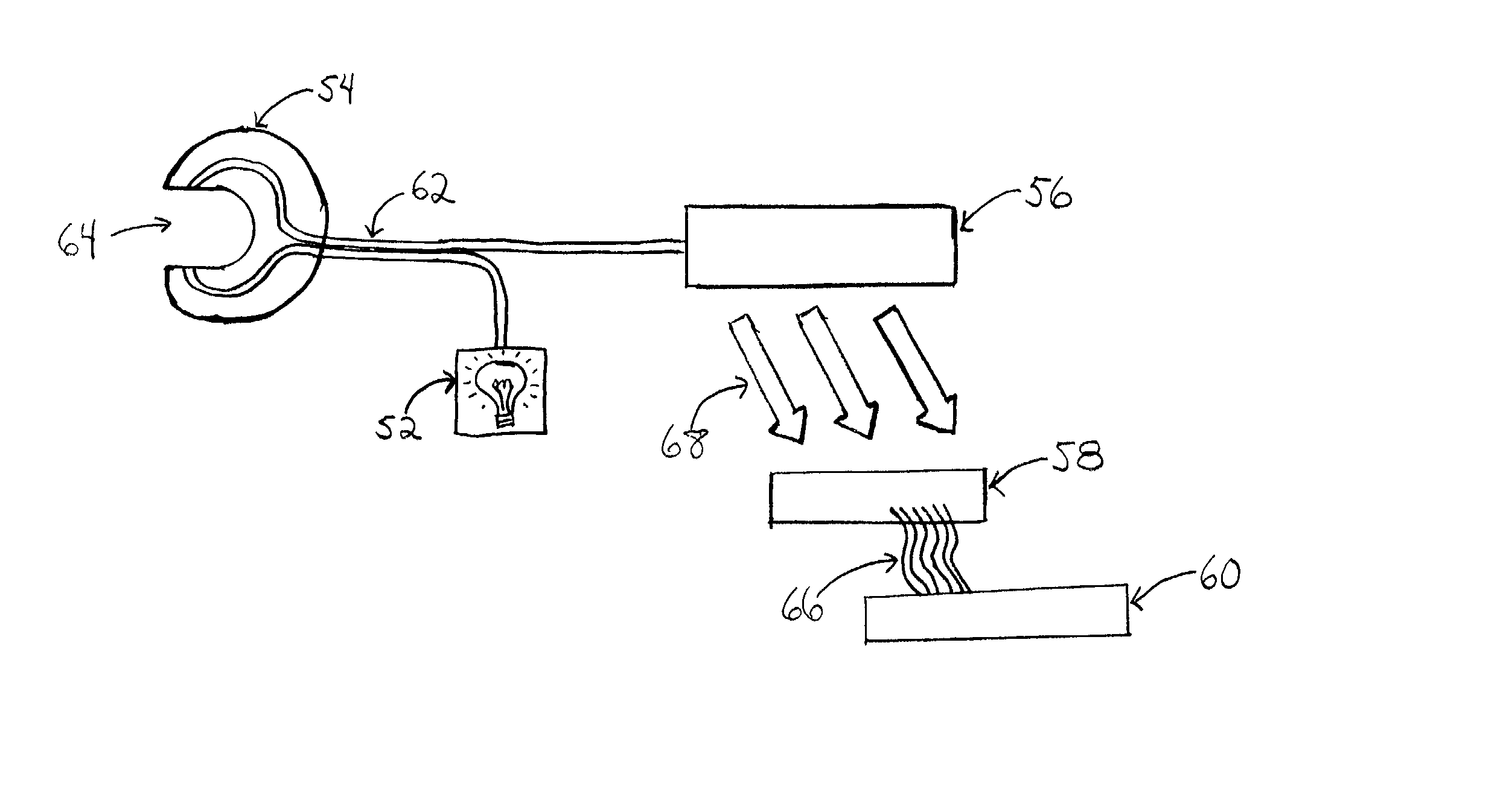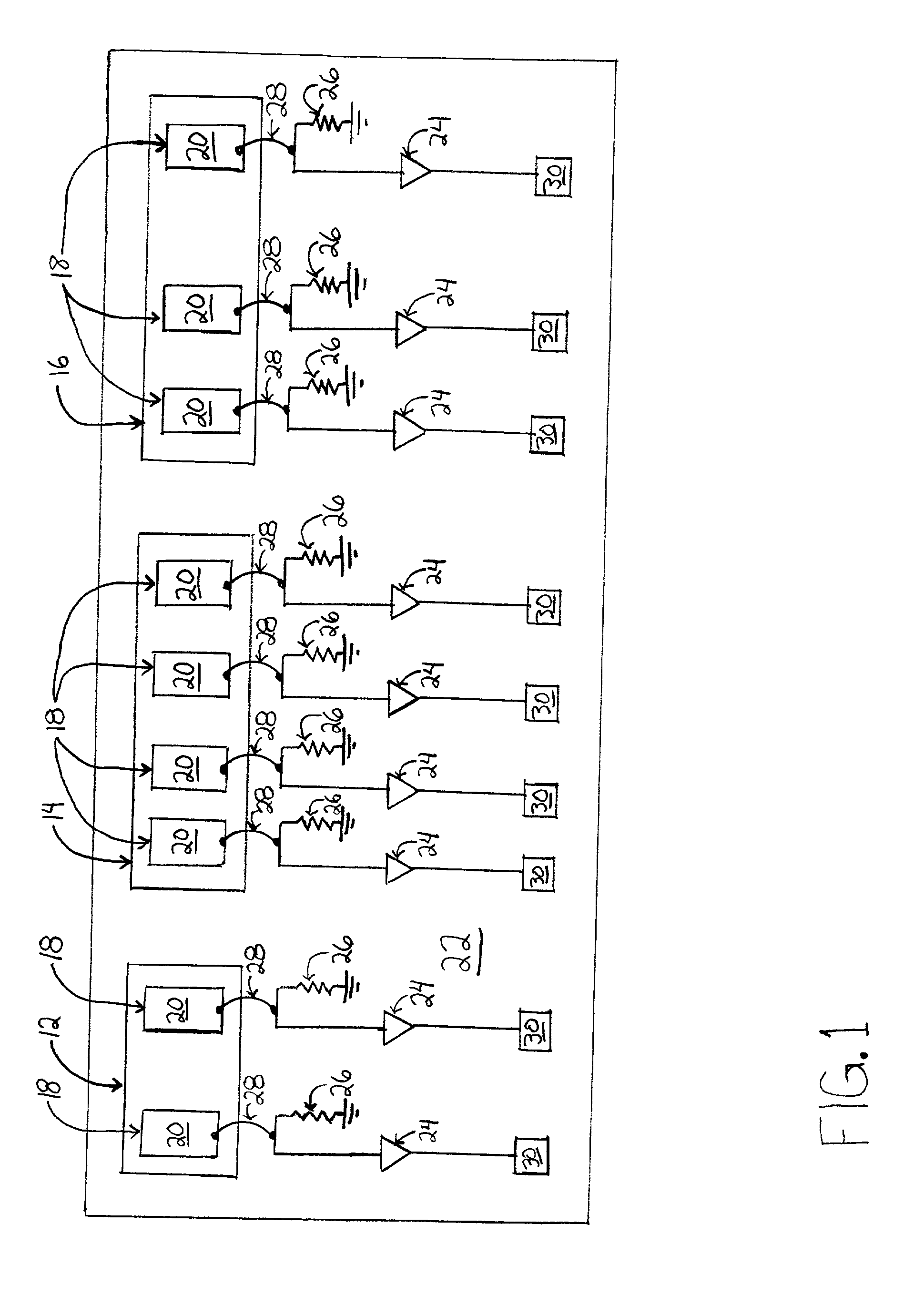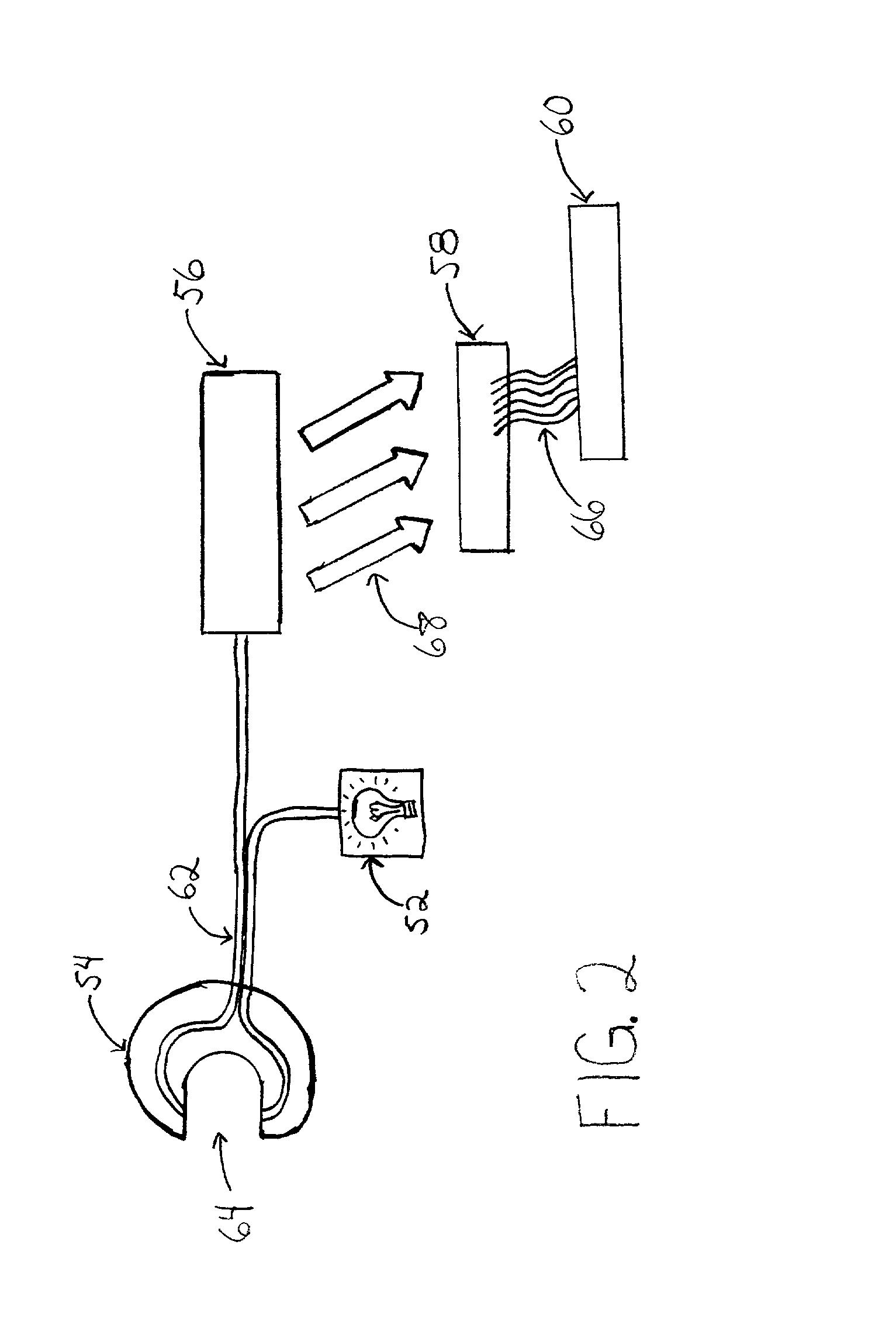Detector array for optical spectrographs
a technology of optical spectrographs and detector arrays, which is applied in the direction of instruments, diagnostic recording/measuring, diagnostics, etc., can solve the problems of finger prick pain, unintentional transmission of hepatitis by hospital personnel from one patient, and stress on materials
- Summary
- Abstract
- Description
- Claims
- Application Information
AI Technical Summary
Problems solved by technology
Method used
Image
Examples
Embodiment Construction
[0033] The number of individual detecting elements should be limited in number to ease manufacture. Because the number of individual sensing elements needs to be limited, various statistical methods and model systems were employed to optimize the detector design based on the application of the detector. This analysis has been applied to the sensing of blood glucose concentration in human subjects.
General Method for Determining the Limited Wavelength Regions Needed for Glucose Analysis
[0034] The number and size (wavelength range) of the discrete limited wavelength regions that would be analyzed to accurately determine the glucose composition of a sample is determined by, among other things: 1) the strength of the glucose absorption peak, 2) the strength of the absorption peaks of the interfering species in the sample, 3) the number of interfering species in the sample, 4) the size of the overlap of the absorption peaks of the interfering species with the glucose absorption peak, and ...
PUM
 Login to View More
Login to View More Abstract
Description
Claims
Application Information
 Login to View More
Login to View More - R&D
- Intellectual Property
- Life Sciences
- Materials
- Tech Scout
- Unparalleled Data Quality
- Higher Quality Content
- 60% Fewer Hallucinations
Browse by: Latest US Patents, China's latest patents, Technical Efficacy Thesaurus, Application Domain, Technology Topic, Popular Technical Reports.
© 2025 PatSnap. All rights reserved.Legal|Privacy policy|Modern Slavery Act Transparency Statement|Sitemap|About US| Contact US: help@patsnap.com



